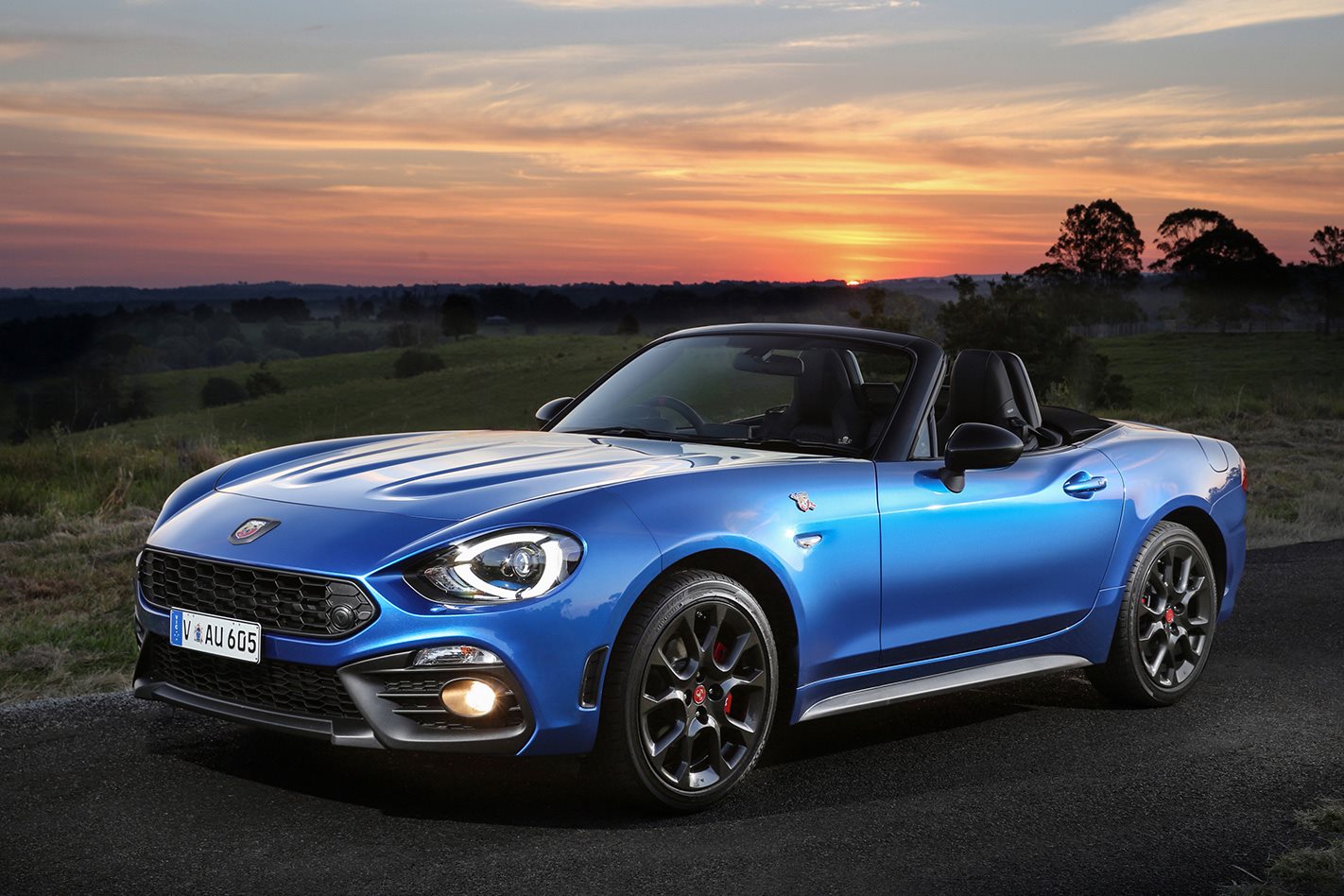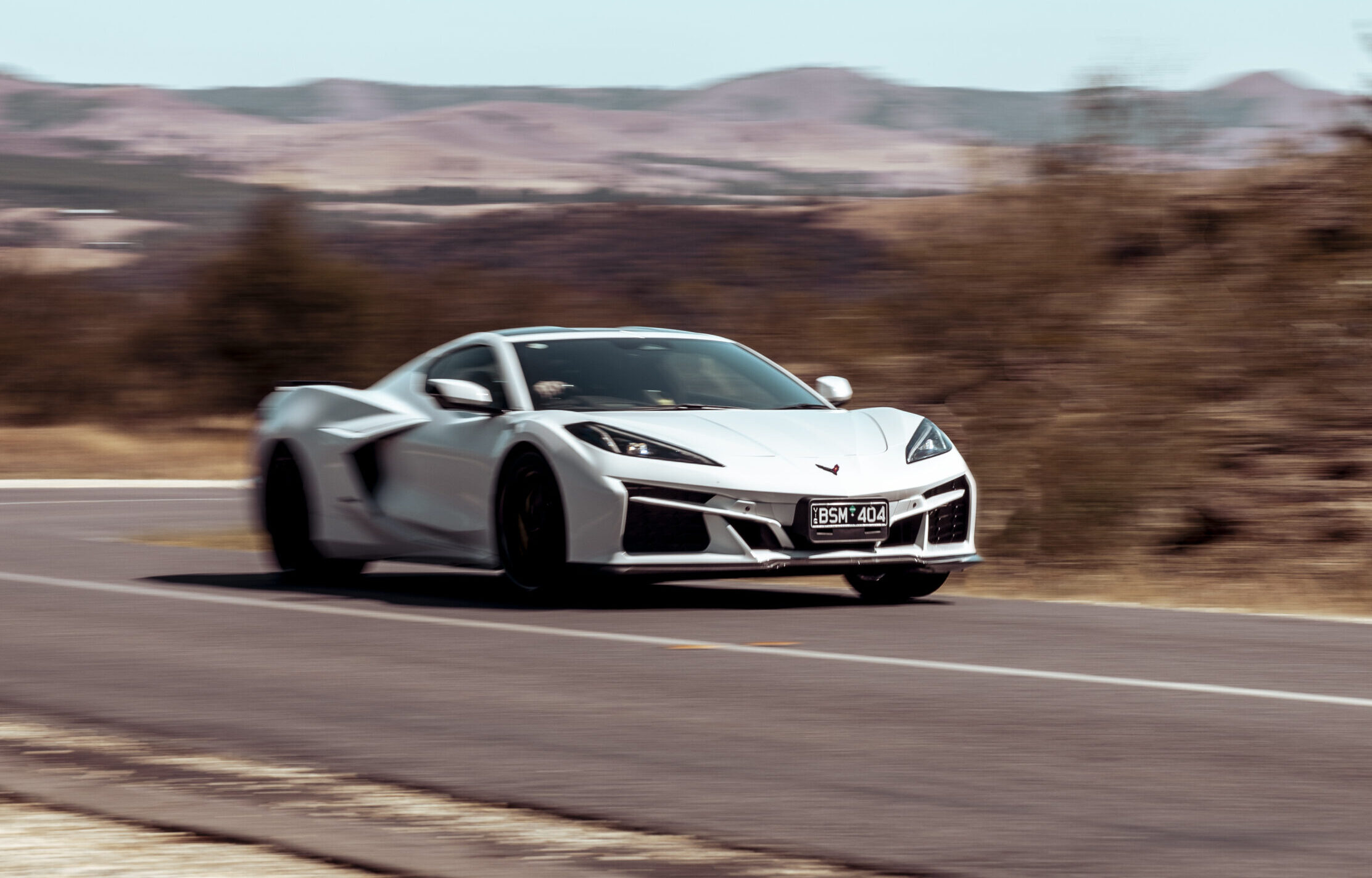Things we like
- Racy components boost value
- Fun adjustable handling
- Engine flexibility
- Precise manual
Not so much
- Could sound racier
- Heavier than MX-5
- Cabin not differentiated enough
- Poor storage
After years of slightly bonkers city cars – with bonkers pricing in Tributo or Biposto guises – Fiat’s tuning team must have oiled their overalls in excitement when they learnt they would get a proper sports car to work on.
It would have been sooner if the 4C hadn’t been handed instead to a desperate Alfa Romeo, but at least an ironic twist sent the 124 Spider the opposite way after FiatChrysler determined it was okay for a Fiat/Abarth but not an Alfa to wear a Made in Japan label.
With the regular Fiat version ignored locally (for now), the Abarth drop-top’s $43,500 driveaway deal squares it up almost identically to the upper-spec version of the Mazda MX-5 upon which it’s based.
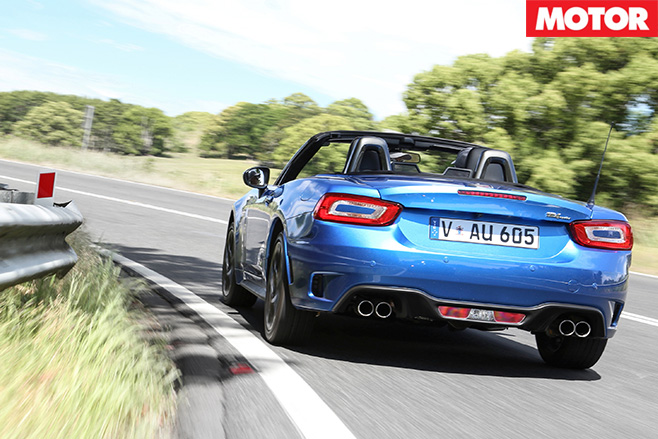
The Italian roadster then adds racier elements such as ‘Abarth by Bilstein’ monotube dampers, four-piston Brembo brakes up front, stiffer anti-roll bars, mechanical LSD, and a front strut brace across the engine bay.
And under that brace is a component Mazda consistently refuses to add to factory MX-5s. The turbocharger is part of Fiat’s trust-and-trusted Multiair 1.4-litre four-cylinder, which here develops 125kW and 250Nm to outnumber the 118kW and 200Nm of the biggest-engined MX-5, the 2.0-litre.
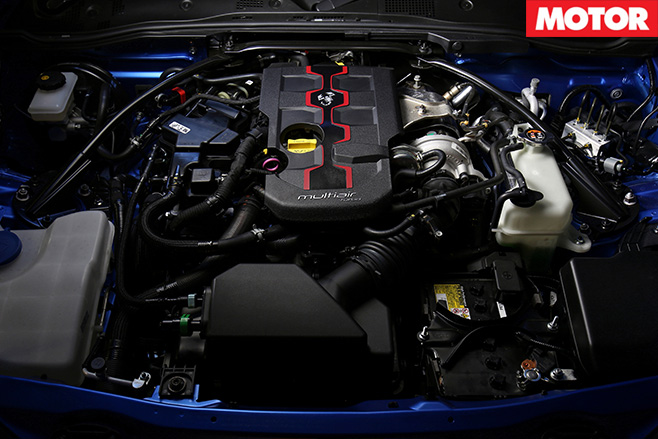
A 0-100km/h quote of 6.8 seconds isn’t far ahead, and it too would be well beaten by a comparably priced hot-hatch.
The 1.4L does provide a key differentiation in character, though. With more torque produced at almost half the revs – 2500rpm – there’s handier flexibility in every gear, simplifying everyday driving.
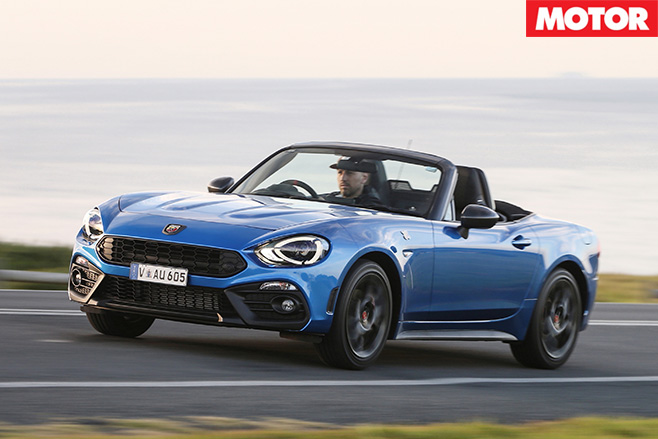
There’s a 6500rpm cut-out but the engine isn’t a wring-out-every-rev affair like the MX-5 – especially the 1.5L version – and it sounds pleasing rather than mesmerising. There’s some likeable induction noise through the mid-range, but an optional ($1895) Record Monza exhaust system may well be a must-tick once available.
Not sure we could say the same for the $2000 six-speed auto. While it wasn’t around to test on launch, it’s difficult to overlook the satisfying interaction of the precise six-speed Aisin manual that is slightly beefier than the Mazda’s same-brand gearbox to handle the 124’s extra torque.
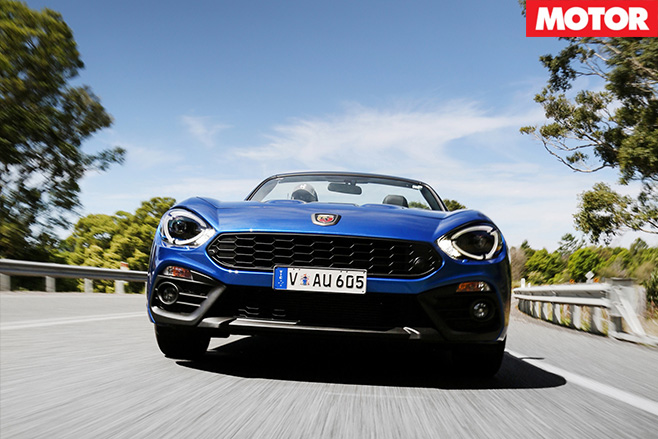
The mode also instructs the stability/traction control to provide more leeway, and adds more weight to the steering. While it’s not as darty off centre as the Mazda’s steering, it’s also easy to appreciate its more linear responses.
Thankfully, Abarth’s suspension tuning hasn’t turned the handling to spaghetti. With the same wheelbase and the engine still tucked behind the front axle, the 124 Spider pivots around bends with familiar enthusiasm – and the same slightly surprising body roll.
It’s never less than exceptionally balanced, though, giving the driver the confidence to four-wheel drift through three-digit-speed track bends knowing the angle of attack can be precisely adjusted via presses/lifts of the throttle. Even with stability control switched off, aggressive use of the throttle is still needed to unstick the 124’s rear end despite its boosted engine.

Extra hair rigidity isn’t needed, either, with the cabin relatively calm with the roof (manually) stowed.
The interior brings the most obvious visual association with the MX-5. The harshest assessment would be that it’s essentially the Mazda’s cabin decorated with scorpion badges. But there is a slightly sportier steering wheel complete with red centre stripe, plus snazzy standard leather sports seats (or optional Recaros).
Flaws carried over include a steering wheel limited to tilt adjustment only, and the shortage of storage options.

SPECS
- Engine: 1368cc inline-4, SOHC, 16v, turbo
- Power: 125kW @ 6500rpm
- Torque: 250Nm @ 2500rpm
- Weight: 1060kg
- 0-100km/h: 6.8sec (claim)
- Price: $41,990; $43,500 driveaway ($43,990 auto; $45,500 driveaway)
Things we like
- Racy components boost value
- Fun adjustable handling
- Engine flexibility
- Precise manual
Not so much
- Could sound racier
- Heavier than MX-5
- Cabin not differentiated enough
- Poor storage


